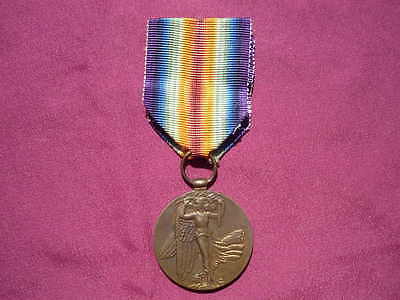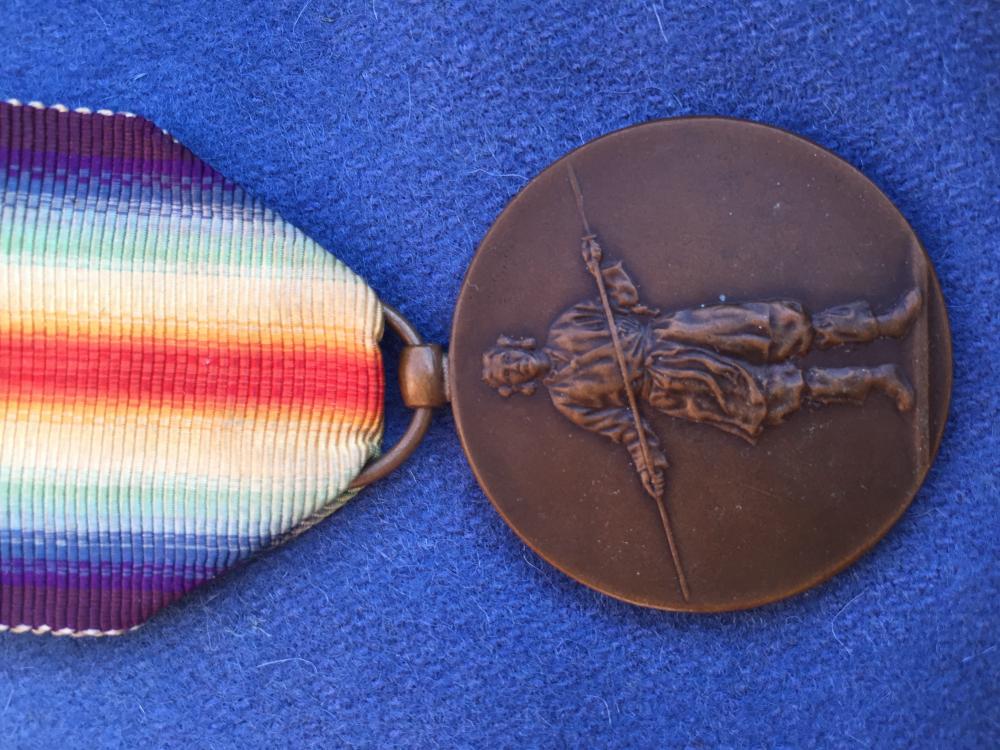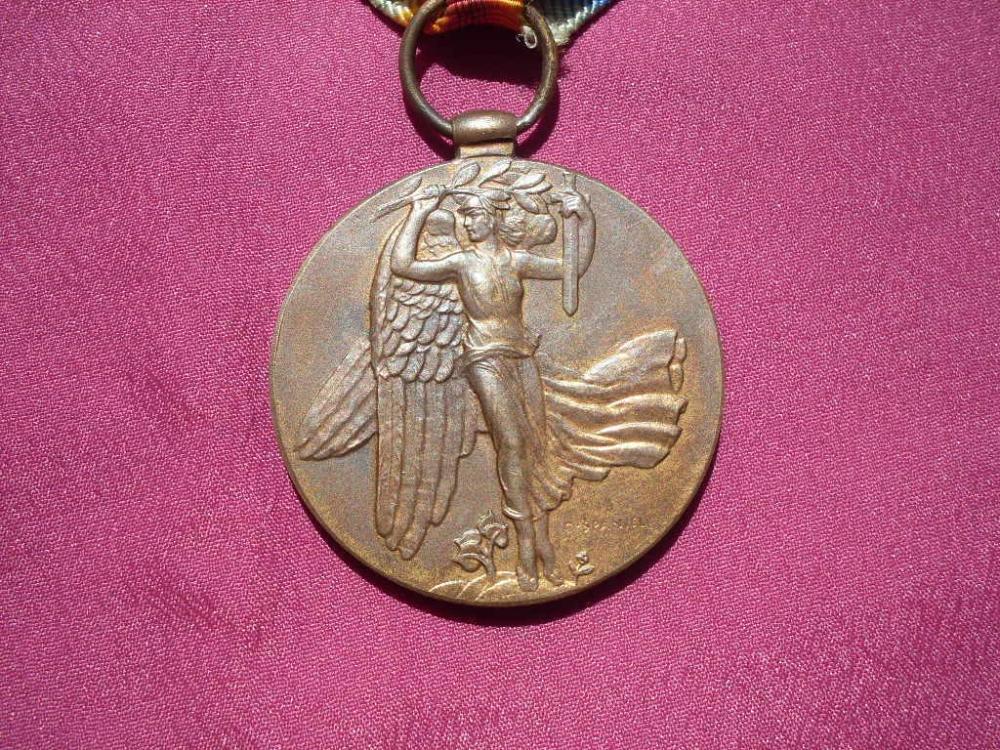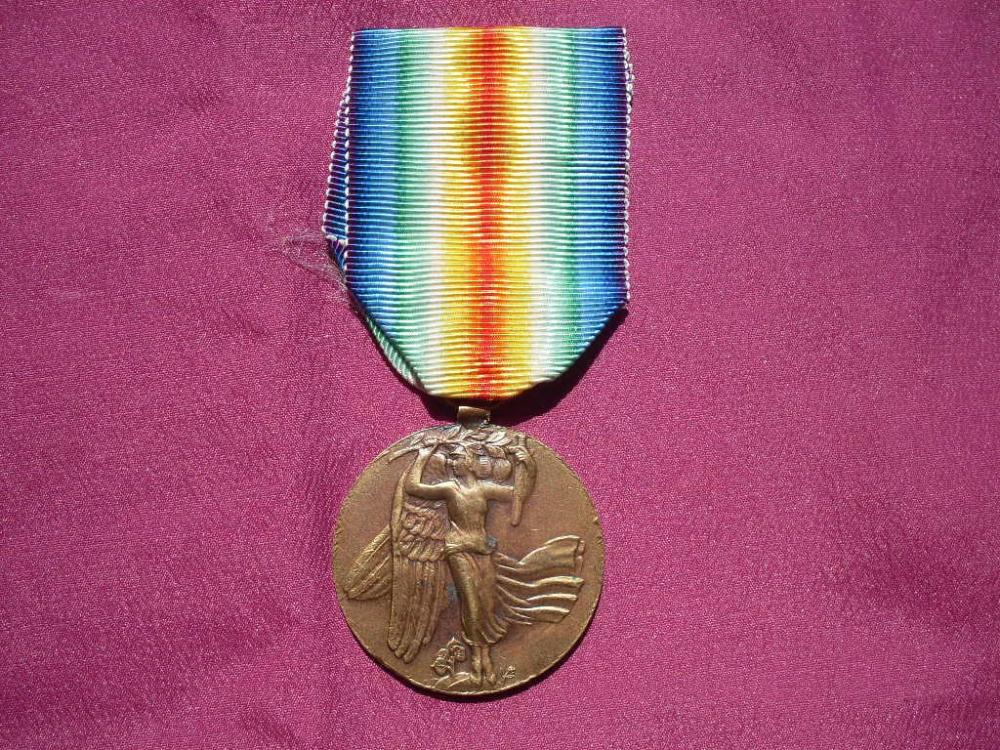-
Posts
1,155 -
Joined
-
Last visited
-
Days Won
1
Content Type
Profiles
Forums
Blogs
Gallery
Events
Store
Posts posted by RobW
-
-
Hello Oliver,
A good selection that you have posted here on the forum for the benefit of all the fellow vic collectors.
The range of minor variations, especially noted on the Romanian vic, is attributable to a wide and un-documented number of local unofficial manufacturers.
It is this large number of variations that makes the vics worth collecting, as you never really finish collecting. It is, however, a long and often slippery slope once you start trying to find all the different major and then minor variations.
Thanks for posting these pictures.
Regards,
Rob0 -
Hello Herman,
I would leave both the brooch and engagment clasps as they are, unless you want to specifically construct a US french-made example complete with clasps. As Bill has indicated the edge marking of the large font 'MADE IN FRANCE' is consistent with late 20's to early 30's french manufacture; as is the ribbed planchet edges.
Once the specimen is in your hands I would also inspect the remainder of the rim for either the marking 'BRONZE' or some other makers mark. You will also want to inspect both sides of the large suspension ring as there are occasionally markings on that as well.
A gentle brush, with some warm water and a soft toothbrush, will remove the crud that has accumulated on the top section of the planchet reverse. A nice example.
Regards,
Rob0 -
Hello david,
A nice example that you have waited patiently for. Sometimes the rarer examples are worth the wait. I would replace the current ribbon (as it is a latter US type) and replace it with some nice French made ribbon. That would make your example more correct to type.
Regards,
Rob0 -
Rob,
That's interesting to hear you believe your Brit. VM with ball suspender is British made, but unnamed I imagine. Do you think it was made as a replacement or for the collectors?
Tony
Tony,
The planchet of my British medal, both obverse and reverse, appears the same as the official strike which leads me to believe it was a British production. The only difference on the planchet is the lack of the small plinth beneath the barrel suspender; which, as you know is part of the planchet striking. In this case the planchet is completely circular with the ball suspender soldered on top in place of the barrel suspender. The entire production has the same shiny gilt finish as seen on the official strikes.
The medal is named. The naming style and type is totally consistent with that seen on official strikes which leads me to conclude it was a later issue maybe as a replacement or a late claim. I don't think it was made for the collector market.
The recipient is listed as: 24583 PTE J.P. CLARK. W.YORK. R.
I have not conducted any research on PTE CLARK yet; nor do I yet have a copy of his MIC. That is a project for the future when I have the time.
In regards the actual medal; due to a number of reasons I no longer post pictures of my collection on this forum; but I hope the explanation above is enough to satisfy your curiosity.
Regards,
Rob0 -
All good thanks Rob. The "pause for thought" was well worthwhile as I was able to study and learn more about the variations available. I'm still on a steep learning curve being relatively new to collecting in this area and hence this forum is incredibly helpful.
Regards,
Percy
Hello Percy,
If you are new to this collecting area then I would suggest you obtain the second edition of Mr Alex Laslo's work on the vic series. It is available relatively cheaply on a myriad of online sites. That, combined with the pictures in this forum, should be of assistance.
Regards,
Rob
0 -
Good Lord, are they faking Victory Medals now?

Hi Peter,
The entire victory medal series has been faked for quite a few years now; more predominantly the harder to obtain pieces like the Siam vic. I suppose with a known international market for the vic series in general it will always be attractive to the fakers to make their wares and hope they snare the unsuspecting buyer.
Luckily, in this instance, the style and type of naming lettering is too different to that seen on originals.
I think one the more lasting benefits of places like this forum is to share the knowledge and good quality pictures as an aid to educate the new and inexperienced collectors.
Regards,
Rob0 -
A ball suspender would be the give away for noticing it's a French made VM. I would think there are other details too.
Perhaps the British VM in the 1934 book is a simple mistake by the author who may not have known the suspender is barrel shaped. As for the mini, I have no suggestions, sorry.
Tony
Hi Tony,
The French firm of M. Delande produced all manner of medals from a variety of countries and it is quite standard for them to use the ball suspender. They have produced a version of a number of vics from other countries that awarded the medal, including the Siam, US, and Portugal vics that had a ball suspender.
The 39-45 Star, illustrated above, is but one of many that were produced by M. Delande and these varieties are not seen that often.
In regards the vic mini I have this one listed above at 15 mm as well as another at 12mm which are two of the standard sizes for French mini's. I also have a full-size British vic with a ball suspender but that specimen appears to be British made with the addition of a ball suspender.
Regards,
Rob
0 -
On 16/01/2017 at 00:26, Percy Chapman said:
Hi Rob,
Thanks again for your wise words. I'll certainly take up your suggestion of replacing the ribbon with a French ribbon so as to be more correct to type as you say.
As to the comments re an off-centre strike you have me scratching my head a bit to be honest. I have looked closely at the posts you mentioned and really can't see any difference. The only thing I can think off after a closer study of my own pics is possibly my poor photography with quite a shadow on the bottom of the medal??? Or maybe I am still missing it?
The photos were simply taken from my iPhone on a desk with a bright desk lamp causing the shadow. Here are a couple more taken with more care than previous and a with a contrasting background.
Cheers,
Percy
Hi Percy,
Thanks for the extra photos. It clearly shows what I had assumed was a planchet error, to be a shadow from the camera. A nice example of the official strike. My apologies if my follow-up question gave you pause for thought.
Regards,
Rob0 -
On 15/01/2017 at 06:36, davidck said:
I have taken the trouble of mounting my collection, thus far. My examples of the Siamese and Brazilian medals are reproductions (as well as, possibly, my "landing victory" Italian), but all others are genuine as far as I know.
I am missing several major variants, including Greece unofficial type 3, Italy official type 5 and unofficial types 2 and 3, Portugal official type 1 and unofficial type 2, and South Africa type 2. I have seen both the South African type 2 and Portuguese unofficial type 2 for sale online, but both got away from me. The others, I have never seen at all, as far as I remember. Anyone aware of any of these for sale somewhere?
Hi David,
To provide some specific guidance regarding the South African type 2. They are particularly difficult to find so if opportunity presents snag it because they just don't seem to be appearing on the market. There are comparison pics of relatively good quality at posts # 2 & #3 at the start of this sub-thread.
If you also collect miniatures be aware that the bi-lingual vic is even rarer than the type 2 full-size. The vast majority of South African miniature groups have the standard British vic mini but there were also bi-lingual vic mini's produced but in very limited quantities. They are exceptionally rarely seen so again; should you see one snag it.
I have a number of examples of the full-size type 2 in my collection, as well as a bi-lingual mini, but they are staying put for the foreseeable future.
Good luck in your quest.
Regards,
Rob0 -
On 12/12/2016 at 05:27, Normandie said:
Hi All,
I'm a new member on the forum and would be interested in your opinions on the below medal. I'm collecting Interallied Victory Medals for 3 years now and after a short break I'm planning to expand my collection.
This French unofficial Chobillon piece is my latest find but the signature 'bronze' and triangle stampings on the rim are missing from the medal. Is it an original piece or a fake medal? Pictures below:
Hello Normandie,
Un-marked Chobillon varieties like this are rarely seen without the BRONZE or 'AC'. I have a couple in my collection which have a more copper finish than a darker bronze as well as one that is in a Kretley Maison box.
A good pick-up of a more difficult to obtain sub-variety of the Chobillon design.
Regards,
Rob0 -
Hello Percy,
To echo Tim's response; definitely not an official piece. I would suggest you copy one of the close-up pics of the obverse/reverse of the official Siam vic from this sub-thread and use that as a guide when attempting to locate an official example.
Short of requesting additional pics from the vendor, you would be well placed to observe and confirm before parting with your money. The Brazil, Cuba and Siam pieces are becoming harder to obtain in good condition and prices never seem to go down.
Have fun searching.
Regards,
Rob0 -
Hello David,
Don't forget to try and obtain the variety that doesn't have a makers name. It is listed as the official type 4. It is harder to obtain than the other three but is out there in the marketplace.
Regards,
Rob0 -
Hello David,
You have asked a very good question but there is no easy answer. The examples types that you have listed as still looking for, are particularly difficult to obtain. As I am sure you will note on the various sub-thread posts, some examples are particularly difficult to find even amongst very experienced and long-time collectors.
All you can do is to continue to check online medal auction houses, medal dealers, and various online auction places. I would also suggest you may want to place a section in the wanted area of the forum. It has worked in the past for other forum members.
Good luck.
Regards,
Rob0 -
Hello Percy,
An official strike in good condition, notwithstanding the British ribbon. I would suggest obtaining a piece of the French manufactured ribbon to replace it as it would be more correct to type.
Interestingly, on this official strike, the planchet on the obverse has been struck off-centre. You will notice on the bottom half of the medal a noticeable line, which is especially apparent just below the ribbon drape over the foot of victory herself. It would appear that the planchet may have slipped which resulted in an off-centre strike. While you see die-flaws and planchet errors regularly on the Romanian unofficial strikes it is not normally seen on the official strikes.
Compare your example to the numerous pics in this sub-thread but note particularly the close-ups on post 55 and 73, and you will see the off-centre strike on your example.
Regards,
Rob0 -
Hello Percy,
Welcome aboard the forum. I am sure you will find a trove of information on vics here amongst the threads.
Noting your comment about the Portugal unofficial type 1 vic; the question of whether or not it will suffice as a country example type, is entirely up to you. If you are just collecting the official strikes of each county your search will be short and, over time, relatively achievable. If however you are looking to obtain all the unofficial strikes in addition to the official strikes, in order to have a more complete collection that will take a considerably longer time and much more effort.
It is up to you; after all, it is your collection. Everyone here collecting vics does so for their own reasons.
Regards,
Rob0 -
On 22/09/2016 at 01:29, Bilco said:
Well, I've bin an' gorn an' dun it!
Liverpool Medals latest list had a Brazil Official Type 2 featured on it so, after careful scrutiny of the photos, I bought it! Here are the photos for you Gents to check over and give your expert opinions:
As far as I can see the medal exhibits the features of the genuine article: it's yellowish tone; obverse has feathers in the wings indistinct, leaves in the wreath flattish with central vein, initials J S at the bottom of the ray at the 7 o'clock; reverse has sharply defined national arms, flat leaves in the wreath, distinct letters especially the G, and the proper diacritical marks on the C and A of Civilisacao.
There are traces of guilding around the figure on the obverse. The pin for attachment to the jacket is of a type I haven't seen before.
Of course, these medals aren't cheap, but the asking price compared well with other examples I've seen offered recently. I won't have any pennies left in the medal fund for a while.
Gentlemen, I await your verdict.
Bill
Hello Bill,
A nice example indeed. A good pickup and addition to your collection.
Regards,
Rob0 -
19 hours ago, oliver860 said:
Good day! My recent purchase of the Italian medals. Note the distance between «ORSOLINI MOD» and «F.M. LORIOLLI & CASTELLI MILANO ». As well as the presence of a point after the word «MOD» first medal. The other two medals is no point!Hello Oliver,
You have managed to obtain all three of the sub-varieties of the Loriolli-Castelli version of the Italian vic. Interestingly the bottom of the three examples is a bit more difficult to locate than the top two.
Regards,
Rob0 -
12 hours ago, bryansk1959 said:
Hi.Your opinions please about these two medals and their ribbons.Many thanks.Alexander.
Hello Alexander,
Both the unofficial type 1 (first example) and unofficial type 2 (second example) that you have obtained are correct, and in good condition. Of note is that there should be manufacturers marks and the word BRONZE stamped on the rims of the medals. The unofficial type 2 does have a bit of verdigris on the obverse. This can generally be removed with a soft brush but there are many and varied opinions on whether or not you should clean medals.
As far as the ribbons are concerned the ribbon on the unofficial type 1 is the correct French ribbon but the ribbon on the unofficial type 2 is actually Belgian ribbon (which is quite distinctive). I would remove that ribbon and find another piece of French ribbon so that it is correct to type.
Regards,
Rob0 -
-
On 23/08/2016 at 23:26, lambert said:
I do not, This photo appears in a conversation about medals the Navy of Brazil, it was a very pleasant surprise. I was very excited, wanted to show the novelty here Forums.Lambert
Hello Lambert and Paul,
It took me over 20 years of collecting vics before I found and managed to obtain a Brazil type 1 with the rim markings. Aside from the Portugal official type 1 I consider the Brazil vic type 1 the rarest of the regular issues. Having said that some of the unofficial strikes are also particularly rare. With the passage of time the scarcity is only likely to increase although I remain hopeful, that with the reach of the internet, more examples will appear from Brazil.Regards,
Rob0 -
On 16/09/2016 at 02:03, Egorka said:
Hello Egorka,
A nice pick up of a few Japanese pieces. I would echo what Brian has already said and attempt to obtain Japanese pieces with their original boxes. As vic collectors we are fortunate that Japanese medals come with such attractive boxes which also makes it easier to keep the items in good condition. You will find it a challenge to obtain Japanese groups as a complete set as they are often split up for short-term profits.
The most difficult aspect is to obtain a Japanese medal, with the box and the corresponding award certificate.
Good luck on the start of your journey. I am sure there will be many vic collectors on this forum that will be able to provide assistance and help should you so need it.
Regards,
Rob
0 -
On 25/5/2016 at 19:39, oliver860 said:
Hello, gentlemen!
Help is needed!
We need a new Battle Clasp Matrix!!!!!!
Hello Oliver,
There has already battle claps matrix's posted in this thread (# 14, # 19 and # 343) which show the most common clasp combinations. Barring any major revelation about incorrect attribution at the divisional level it is not likely that a new matrix is going to be produced.
The clasp matrix from the Laslo volume (Ed 1) is still considered relevant. Any further detail required on specific individuals, or units not listed in these matrix's, would require further detailed research. There are a number of additional references relating to battle and service clasp entitlement with the most recent published being:
'WW1 Campaign and Service Credits', Planchet Press Publication, Pub 21B (June 1996).
If you contact the OMSA it is possible that someone may still have a copy available for sale.
Regards,
Rob0 -
On 3/6/2016 at 02:18, jshorter said:
Hi everyone,
I was wondering if I could your opinions on this piece? I've been burned before on "official" strikes of the Victory medal. To me, it looks a little to shiny and there's that weird looking line on the bottom reverse...
Thanks for your thoughts!
Jason
Hello Jason,
Late to the party but I would echo the words of Lambert. Noting that the piece has already sold I would have passed on the item for the following reasons:
1. The planchet has been heavily polished on both sides, with the scoring marks more noticeable on the obverse. This is a great way to destroy value in a medal especially a lovely bronze medal.
2. There is a significant die flaw on the bottom of the reverse. While it is usual to see die flaws on the numerous 'unofficial' strikes, it is not regularly seen on the 'official' strike.
3. The medal has been 'court-mounted' which is a predominantly British and Commonwealth manner of mounting medals and certainly not the style in which Romanian medals were mounted; either singly or when in groups.
4. The ribbon is not correct to type, looking like the British weave of ribbon.
On that basis I would have passed on the item. There are just as many good condition official strikes in the market, that have not been polished and have kept their lovely dark patina.
Just my 2 cents worth.
Regards,
Rob0 -
Hello Alex,
This is what is termed an 'official type 2' with the name of the designer on the obverse. While I can't see the entire ribbon it too looks original, un-blended to type. A nice example in good condition.
QuoteThis example is what is known as a 'Reissue type 2' from the mid to late 1940's era, that does not have the designers name on the obverse. There are two sub-types with the main difference being in the medal finish; either having a gold-gilt or flat brassy finish. In this case it is difficult to tell by the picture. It too has the correct to type and era ribbon.
Regards,
Rob0









Cuban Victory Medals
in Inter-Allied Victory Medals of the Great War
Posted
Hello David,
Notwithstanding that you are out of pocket some money, I would probably keep it as an education opportunity. Having modern reproductions to review in hand is as probaly as good as having the genuine example.
The sort of bronze coloured reproduction that is illustrated above are quite common an eminate from the UK. Most of the vic series have been so reproduced all in the same sort of base metal. In this particular example the reverse planchet die flaws are common across a range of Cuban reproductions so keeping one close by for reference is a good idea.
Regards,
Rob